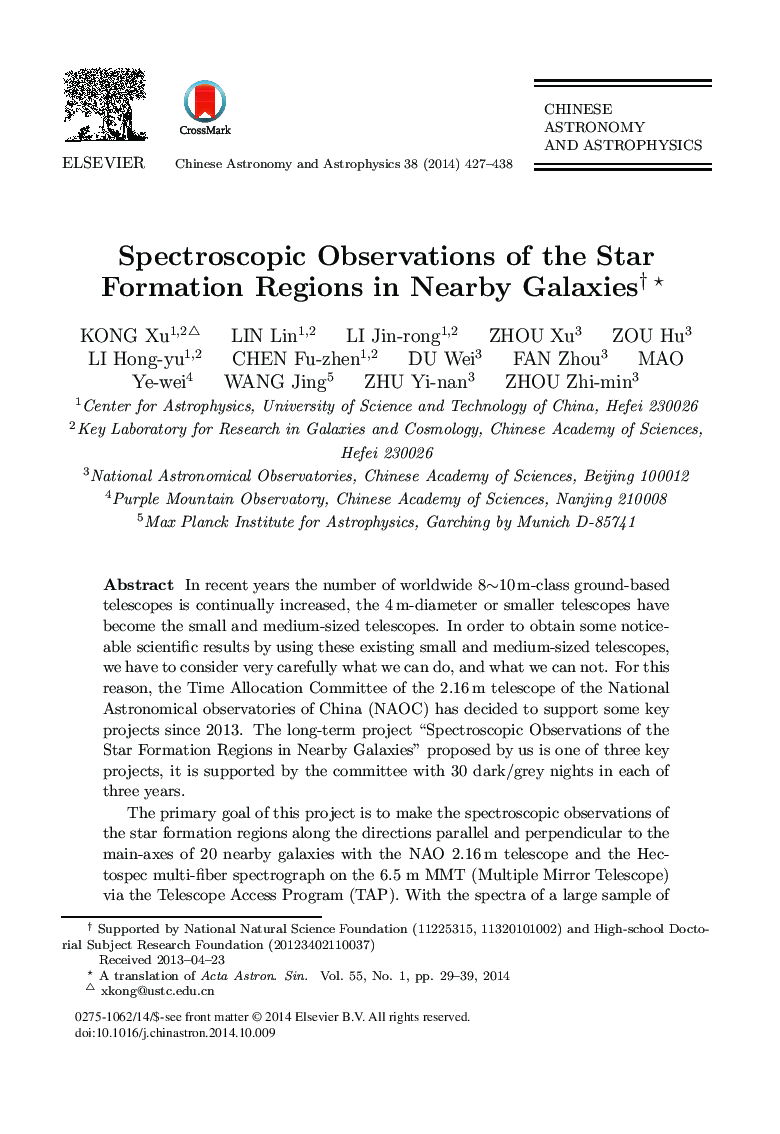| Article ID | Journal | Published Year | Pages | File Type |
|---|---|---|---|---|
| 1771849 | Chinese Astronomy and Astrophysics | 2014 | 12 Pages |
In recent years the number of worldwide 8∼10 m-class ground-based telescopes is continually increased, the 4 m-diameter or smaller telescopes have become the small and medium-sized telescopes. In order to obtain some noticeable scientific results by using these existing small and medium-sized telescopes, we have to consider very carefully what we can do, and what we can not. For this reason, the Time Allocation Committee of the 2.16 m telescope of the National Astronomical observatories of China (NAOC) has decided to support some key projects since 2013. The long-term project “Spectroscopic Observations of the Star Formation Regions in Nearby Galaxies” proposed by us is one of three key projects, it is supported by the committee with 30 dark/grey nights in each of three years.The primary goal of this project is to make the spectroscopic observations of the star formation regions along the directions parallel and perpendicular to the main-axes of 20 nearby galaxies with the NAO 2.16 m telescope and the Hec-tospec multi-fiber spectrograph on the 6.5 m MMT (Multiple Mirror Telescope) via the Telescope Access Program (TAP). With the spectra of a large sample of star formation regions, combining with the exising multi-wavelength data from UV to IR, we can study the galaxy dust extinction, star formation rate, metal abundance, and the two-dimensional distributions of stellar population proper-ties, as well as the relationships of the galaxy two-dimensional properties with the galaxy morphologies and environments. As the first paper of this project, we describe here the scientific objectives, sample selection, observation strategy, and present the preliminary result of the spectroscopic observation towards the galaxy NGC 2403.
